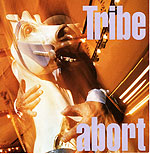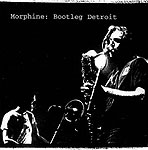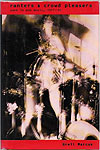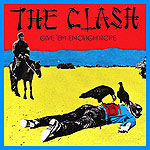Best Of 2012: Chelsea Spear
Published on December 20th, 2012 in: Best Of Lists, Books, Music, Retrovirus |Say you’re a rock critic and the calendar has dwindled to a single page. You’re expected to write a year-in-review column, but your artistic heroes have disappointed you and none of the year’s new releases have galvanized you the way you’d hoped. What do you do? You reach into your back pages to look at some forgotten favorites and things that got away from you the first time around. In writing about these forgotten favorites, maybe you can introduce your readers to something new as well.
ToyboatToyBoatTOYBOAT, O Positive
Abort, Tribe

Last year, my boyfriend gave me a modest-seeming Christmas present in the form of a vinyl record he purchased at a library sale: a still-sealed copy of the sole major label album by beloved, forgotten Boston band O Positive. For about ten years, the quintet ruled the Boston music scene with their moody, artsy-yet-accessible rock. While no needle touched the bright red vinyl, looking at the cover art and perusing the liner notes inspired me to pull the CD out of camphor and throw it on my portable listening device.
Listening to the record unspooled a filmstrip’s worth of memories for me, both good and bad. This album is so tied to the year I turned thirteen and started getting paid for my writing. (My first big story was my interview with O Positive lead singer Dave Herlihy, whose earnest stage presence, intense singing style, right-on political beliefs, and resemblance to young James Spader had a heady effect on me.) Because it’s so fraught with significance for a period in my youth, listening to it from an objective point of view and writing about it poses a unique challenge. The title, which evokes nautical themes on a small scale, reverberates through the album via oceanic lyrical imagery and densely arranged, atmospheric music that pulls the listener into its undertow. Fans of ’80s college rock like XTC and Echo and the Bunnymen would do well to seek out this album.
As I listened to toyboat, I felt curious about Tribe, a Boston quintet from about the same era. They frequently played gigs together (I first saw both bands at a WBCN-sponsored concert at the old Boston Garden), and after O Pos’s album was all but released to the cutout bins, the local cognoscenti saw Tribe as the next big thing. Their second album, Abort, had the bad luck to be released on the same day as some album called Nevermind. The angular melodies, keyboard-driven arrangements, and glossy production were the polar opposite of the classic rock-influenced grunge that would colonize the airwaves in Nirvana’s wake, and the album soon fell by the wayside.

As with many Boston bands before them, Tribe re-recorded most of their independently released debut LP for their national bow. Producer Gil Norton helped the band to edit down their songs to their most vital parts—which worked beautifully for “Here at the Home” but removed some of the charm from the title track—and coaxed out muscular performances. The visceral stomp of “Joyride” still has an eerie, horror-movie immediacy twenty years after it ruled the airwaves.
Unfortunately, neither of these albums is available in the usual legal channels. Tribe fan Steve Latham has made Abort available for download on his website (along with practically everything else the band ever committed to tape). ToyboatToyBoatTOYBOAT remains elusive on even the MP3 archival blogs, but copies are easy enough to come by on Amazon. Additionally, former band factotum Dave Martin has several live shows, demos, and rarities available through the band’s slightly outdated website.
Cure for Pain, Morphine
Bootleg: Detroit, Morphine

The mid-1990s success of Morphine was as unexpected as it was welcome. Well-played, cleanly produced, cinematic songs played by the unlikely trio of bass, drums, and saxophone shouldn’t have been this successful during the grunge era, but audiences knew a good thing when they heard it. As problematic as Robert Balver and David Ferino’s documentary Cure for Pain was, watching it inspired me to dig their albums up and give them another whirl.
When Morphine first became popular in Boston, my musical tastes hadn’t refined to the point where I could appreciate their output. Cure for Pain, their most cohesive album, became the frequent accompaniment to long, humid walks to the train station over the summer. The cascading, spaghetti western beats and the sexy-gone-wrong lyrical and sonic narratives gave those hazy sojourns a greater sense of drama.

Though I was of age and frequented live shows when Morphine was an ongoing concern, I only had the privilege of seeing them at an annual block party in Central Square. (Watching the trio unfurl the barbed narrative of “Thursday” before an audience that included squalling children was a very strange sight indeed.) Thankfully, Mark Sandman oversaw mastering on Bootleg: Detroit, an audience recording of a Morphine set from the mid-1990s. The band sounded perfect, and while their music had an expansive quality live, they never went into pointless drums-and-space noodling. Plus, Mark Sandman’s onstage banter, while brief and to the point, had a wry quality that couldn’t help but endear itself to me.
Ranters and Crowd Pleasers, Greil Marcus

The circumstances under which this came into my possession as a teenager are best left to the mists of time. When I found it, I slept with it under my pillow every night. Living as I did in a blue-collar suburban town, I needed something to tell me that there was a world outside city limits. Greil Marcus not only reassured me of its existence, but he also illustrated how that world came to be and what it would become.
When I came back to it as an adult, the shine had come off Marcus for me a bit. I found he could be coldly intellectual, and his dismissal of a few mainstream female artists came off as a little sexist. At the same time, he does a great job of putting artists like The Clash, Elvis Costello, and Bruce Springsteen into a greater historical and political context, and the long essays about Rough Trade Records and Gang of 4 made those artists more immediate for me. Those who want to better understand the post punk scene and the political environment to which it was reacting should pick this one up.
Give ‘Em Enough Rope, The Clash

The music of the Clash, as well as their image and political ideals, played a huge role in my NaNoWriMo novel. While the book is set less than half a decade after they broke up, my teenage protagonist Sally Darling cites them as her favorite band…and also wants to lose her virginity to Joe Strummer. When I was channeling Sally’s defiant attitude, I’d take breaks from writing to dance around my apartment to this album.
The Stuff that Legitimately Came Out in 2012, Various Artists
I also loved some things that came out during this calendar year, like: Big Dipper Crashes on the Platinum Planet (reviewed here), Ana Tijoux’s La Bala, Theresa Andersson’s Street Parade (reviewed here), Gotye’s Making Mirrors, Melody Gardot’s The Absence, Gaby Moreno’s Postales, and Jack White’s Blunderbuss . . . which also put me in mind of my thirteen-year-old self.
While I can’t think of any 2013 albums that might set my pulse a-racing, I’m looking forward to seeing Gaby Moreno, Dessa, and Big Dipper in the early months of the New Year. Plus, I’m sure something will catch my fancy.
Time limit is exhausted. Please reload the CAPTCHA.